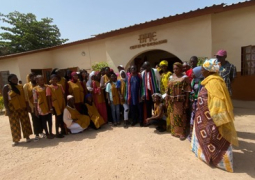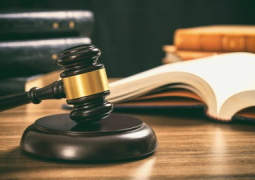According to testimonies, five issues relating to the President’s Convoy were the major causes of accidents that often resulted in the death of motorists/pedestrians or spectators and other rights violations that arose from the actions of the soldiers driving in the convoy. These issues were throwing of biscuits and T-shirts while the convoy was moving, over speeding, attacks on people who failed to acknowledge the convoy, attacks on those who were perceived as threats to the convoy and attacks on those who did not give way to the convoy. These issues will be featured in details by this medium.
Over 10 witnesses testified before the Commission about the accidents caused by the President’s Convoy, some of whom were military drivers in the convoy, and they include: Abdoulie Barry, Matthew Bass, Ebou Jarju, Lamin Jarju (soldier), Baba Kanyi, Abdoulie P.O.Njie, Lamin Sillah (soldier), Musa Saidykhan (soldier), Protected witnesses (KC48) and Protected witnesses (KB29).
The TRRC reports states that "the President’s Convoy was led by sweepers who were responsible for clearing motorists and pedestrians off the road. The sweepers included vehicles of the police and infantry soldiers. The vehicles of the infantry sweepers had two PKM guns (general purpose machine guns) mounted on two trucks. Then came the command vehicles occupied by state guards and other officers. These were followed by the state press, protocol, plainclothes, presidential vehicles and the ambulance which came last."
"Always, there were two or three reserved vehicles in the convoy. The soldiers that accompanied the convoy were always dressed in full combat gear and armed with AK47 rifles and PKMS guns mounted on vehicles. The convoy had a communication system connected to the Presidential vehicle as well as the protocol vehicle and the ambulance."
"This was an unprecedented show of might and power to show the citizenry that they were in complete control of the country and its people and everyone or anything that stood in their way or did not show obeisance would be severely dealt with. The sheer display of the heavily armed vehicles and the speed with which they went struck fear into the hearts of many Gambians and people resident in The Gambia."
"According to Saine (2020), “Sana Sabally, as second in command, presided over ‘a reign of terror’. During the short period in which he was the Vice Chairman of the Junta (July 1994-July 25 1994) he used the roads as if they were his and treated all road users and pedestrians that were perceived as being disrespectful with utter contempt."
"The Commission received evidence that the President’s Convoy under the command of the former President Yahya A.J.J. Jammeh and Sana Sabally, Vice Chair of the Junta, travelled at very high speed and did not stop for anything under the disguise of security reasons. Witnesses revealed that whatever happened on the road was known by both Vice Chair-Sana Sabally and former President Yahya A.J.J. Jammeh."
"In the case of the former President’s Convoy, any incident relating to the convoy was instantly communicated over the internal radio communication system to the hearing of everyone, including the President who would thus be aware of whatever had happened."
"The witnesses further testified that although there was always a convoy commander who sat in the presidential vehicle transmitting orders and directions to other members of the convoy, Yahya A.J.J. Jammeh was always in charge. He would dictate and direct the speeds at which the Convoy would travel at and how he deemed it fit. The orders he gave to the Convoy commander were transmitted by him to the other members of the convoy via the
same communication device."




